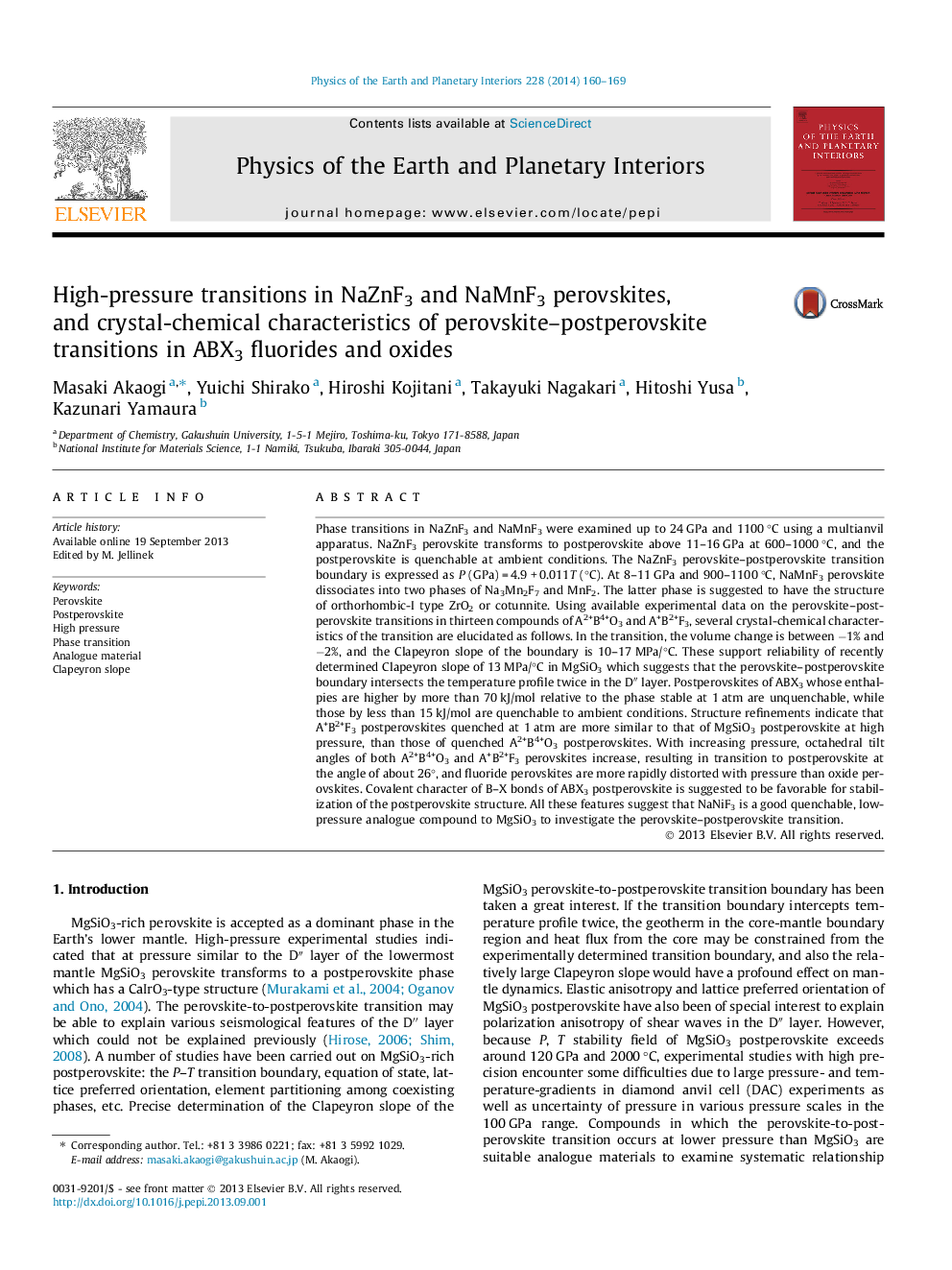| کد مقاله | کد نشریه | سال انتشار | مقاله انگلیسی | نسخه تمام متن |
|---|---|---|---|---|
| 4741588 | 1641513 | 2014 | 10 صفحه PDF | دانلود رایگان |

• NaZnF3 perovskite (Pv) transforms to postperovskite (pPv) at 16 GPa and 1000 °C.
• NaMnF3 Pv dissociates at 10 GPa and 1000 °C into MnF2 + Na,Mn-phase, instead of pPv.
• In most of Pv–pPv transitions of ABO3 and ABF3, the P–T slope is 10–17 MPa/°C.
• Covalent character of B–X bonds of ABX3 may be favorable for stabilization of pPv.
• NaNiF3 is a good quenchable, low-pressure analogue for MgSiO3 Pv–pPv transition.
Phase transitions in NaZnF3 and NaMnF3 were examined up to 24 GPa and 1100 °C using a multianvil apparatus. NaZnF3 perovskite transforms to postperovskite above 11–16 GPa at 600–1000 °C, and the postperovskite is quenchable at ambient conditions. The NaZnF3 perovskite–postperovskite transition boundary is expressed as P (GPa) = 4.9 + 0.011T (°C). At 8–11 GPa and 900–1100 °C, NaMnF3 perovskite dissociates into two phases of Na3Mn2F7 and MnF2. The latter phase is suggested to have the structure of orthorhombic-I type ZrO2 or cotunnite. Using available experimental data on the perovskite–postperovskite transitions in thirteen compounds of A2+B4+O3 and A+B2+F3, several crystal-chemical characteristics of the transition are elucidated as follows. In the transition, the volume change is between −1% and −2%, and the Clapeyron slope of the boundary is 10–17 MPa/°C. These support reliability of recently determined Clapeyron slope of 13 MPa/°C in MgSiO3 which suggests that the perovskite–postperovskite boundary intersects the temperature profile twice in the D″ layer. Postperovskites of ABX3 whose enthalpies are higher by more than 70 kJ/mol relative to the phase stable at 1 atm are unquenchable, while those by less than 15 kJ/mol are quenchable to ambient conditions. Structure refinements indicate that A+B2+F3 postperovskites quenched at 1 atm are more similar to that of MgSiO3 postperovskite at high pressure, than those of quenched A2+B4+O3 postperovskites. With increasing pressure, octahedral tilt angles of both A2+B4+O3 and A+B2+F3 perovskites increase, resulting in transition to postperovskite at the angle of about 26°, and fluoride perovskites are more rapidly distorted with pressure than oxide perovskites. Covalent character of B–X bonds of ABX3 postperovskite is suggested to be favorable for stabilization of the postperovskite structure. All these features suggest that NaNiF3 is a good quenchable, low-pressure analogue compound to MgSiO3 to investigate the perovskite–postperovskite transition.
Journal: Physics of the Earth and Planetary Interiors - Volume 228, March 2014, Pages 160–169